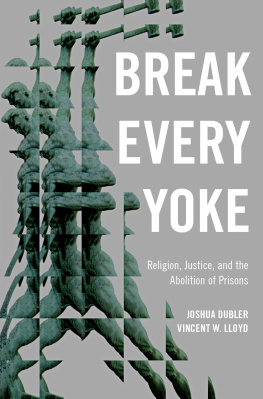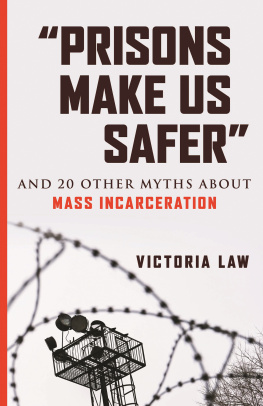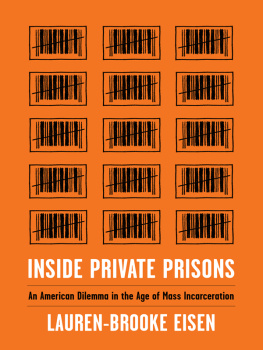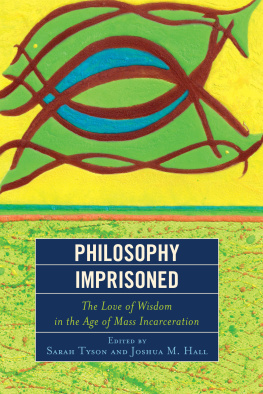Break Every Yoke

Oxford University Press is a department of the University of Oxford. It furthers the Universitys objective of excellence in research, scholarship, and education by publishing worldwide. Oxford is a registered trade mark of Oxford University Press in the UK and certain other countries.
Published in the United States of America by Oxford University Press
198 Madison Avenue, New York, NY 10016, United States of America.
Oxford University Press 2020
All rights reserved. No part of this publication may be reproduced, stored in a retrieval system, or transmitted, in any form or by any means, without the prior permission in writing of Oxford University Press, or as expressly permitted by law, by license, or under terms agreed with the appropriate reproduction rights organization. Inquiries concerning reproduction outside the scope of the above should be sent to the Rights Department, Oxford University Press, at the address above.
You must not circulate this work in any other form and you must impose this same condition on any acquirer.
Library of Congress Cataloging-in-Publication Data
Names: Dubler, Joshua, author.
Title: Break every yoke : religion, justice, and the abolition of prisons /
Joshua Dubler and Vincent W. Lloyd.
Description: New York : Oxford University Press, 2019.
Identifiers: LCCN 2019019521 | ISBN 9780190949150 (hardback) |
ISBN 9780190949167 (updf) | ISBN 9780190949174 (epub) | ISBN 9780190949181 (online)
Subjects: LCSH: PrisonsMoral and ethical aspectsUnited States. |
CriminologyMoral and ethical aspectsUnited States. |
Social justiceUnited States.
Classification: LCC HV9466 .D73 2019 | DDC 261.8/3360973dc23
LC record available at https://lccn.loc.gov/2019019521
For Jeffrey Stout
Contents
The social consequences are devastating. By means of our systems of incarceration, policing, parole, and probationand the carceral logics these institutions normalizewe punish our poor, prey upon the most vulnerable among us, perpetuate racial inequalities, enforce rigid gender norms, and contribute to the destruction of the earthamong a host of other effects, both direct and diffuse. Once, if asked to pinpoint the quintessentially American cultural entity, one might have reasonably pointed to the farm, the town, the church, or the marketplace. Asked nowadays to encapsulate what America is about, one could do far worse than hold up the prison as exemplum.
The prison is a particularly American problem, and America is particularlypeculiarlyreligious. Coastal elites and the media these elites own and administer generally portray a country governed by fundamentally secular ideals, but many people are rightly skeptical of this conceit. In a variety of ways, Americans are a religious people. We say this not to speak for (and certainly not to valorize) those whom Fox News has been known to call the real Americans. We are instead making an anthropological claim about the worldor indeed, the many worldsthat Americans imagine and actualize. By means of stories, ideas, and images (and via the institutions, media, and practices through which these stories, ideas, and images are transmitted) we come not only to imagine the world, but to actively occupy the world. In ways both obvious and less obvious, for the majority of Americans, religion is central to this process.
Even in ostensibly secular spaces, secularization in the United States is, at best, wildly incomplete. American culture is steeped in religious languages, practices, and themes: redemption, hope, self-transformation, love of your neighbor, hate of your other neighbor, beloved community, holy crusade. These and other religious tropes are woven into the national cultural fabric, and they furnish the tools by which we cobble together selves and collectivities. Like Americas culture of punishment, which seeps out of prisons and courthouses into the culture at large, American religion cannot be contained merely by bolting the cathedral doors. Even those of us who would never be caught dead in church are not immune to American religions languages and moods, dreams and dispositions. To be a subject of this great and grotesque nation is to be filled, to some degree, by the spirit of religion.
We say this not to debunk but to exhort. The spirit of religion infuses the ruling American order, but it also infusesespecially infusesthe collective projects of those who struggle to dismantle this order. In public and private, and in mass-mediated spaces, ruling elites carefully manage and repress religionjust as they manage and repress race, gender, sexuality, disability, immigration, and labor. Diked and rerouted, these sites of potential mass disruption are smoothly integrated into the reproduction of power structures and the flows of capital. But management is a tricky business, and the long arc of the universe bends in the direction of messier outcomes. We understand that religion has often been used to mollify, but religion may also ignite. We write with the hope of coaxing elements of the religious repressed back to the surface. We want to call forth and explicitly ponder the religious stories, symbols, feelings, and practices that have shapedand pushed back againstthe present civic order, a civic order in which carcerality is a predominant feature. In so doing, we hope to lend support for smashing those elements that engender mass harm and to open up space for alternatives that foster mass healing.
To understand the United States as a prison nationand to cure the maladies that afflict usit is imperative that we understand it as a religious prison
What role did religion play in underwriting the explosive growth of prisons over the last five decades? What role does religion play in sustaining mass incarceration today? And most crucially, what potential role might religious ideas, practices, and communities play in destroying the mammoth carceral state and its attendant carceral culture, and in helping to foster in its place a culture of mutual care? These are the questions that animate the inquiry to follow.
A Religious Prison Nation
The graph is familiar and baffling: a more or less flat line representing the US prison population into the early 1970s, followed by an almost vertical leap afterward. The contrast borders on the cartoonish. Something happened, but what?
Among scholars, activists, and the general public, three stories currently circulate for what happened. Let us call these stories the race account, the politics account, and the economics account. According to the first, the United States has always found ways to ensure a racial caste system in which Black people are disenfranchised and impoverished, their labor brutally extracted. When slavery ended, white terror installed a regime of segregation.
According to the second story, mass incarceration has been a bipartisan political project. In this account, the forces of white supremacy team up with midcentury liberalisms bullishness about the power of state institutions to engineer equality of outcome. Under the Great Society, punishment outcomes were rationalized and standardized, and when the optimism curdled, prisons became an expedient solution to an ever wider set of social and political problems. Discipline and demonize, stoke up moral panics about crime, broaden the set of behaviors that are criminalized, toughen penalties, and limit peoples power to contest their sentences: Richard Nixon developed this game, Ronald Reagan refined it, and after Michael Dukakiss shellacking in the 1988 presidential election, Bill Clinton went all in. The ratchet only turned one way.











